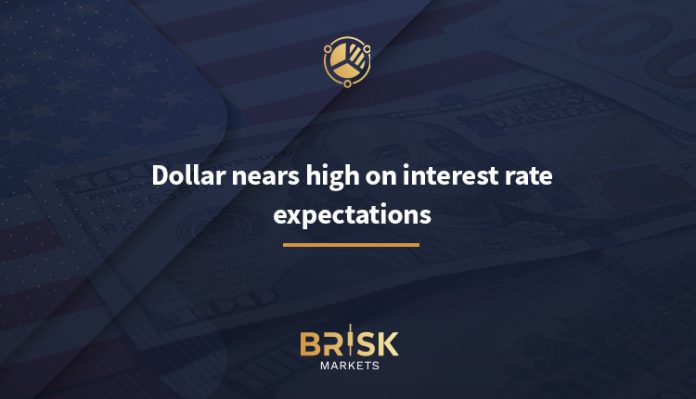The dollar is nearing a more than 75-day high, with slight movements in Asian trading, as the dollar index and dollar index futures fell slightly but remained near their strongest levels since the beginning of August. This strong performance of the dollar reflects growing expectations that the US Federal Reserve may slow rate cuts more slowly than initially expected, with recent economic data showing power passes in the U.S. economy. Recently published data suggested that economic activity in the US remains strong, reinforcing optimism that the Fed may be more careful in taking steps to cut interest rates.
Moreover, political tensions play an important role in supporting the dollar as a safe haven. This caution increases demand for the US dollar as one of the most stable currencies in times of political uncertainty. The outlook for the US dollar remains strong due to multiple factors. The dollar is likely to stay near its highs as the US economy strengthens and expectations for a slower-than-expected rate hike continue to grow. The US dollar remains close to its highs thanks to an optimistic economic outlook and strong data confirming the stability of the US economy.
With talk of raising interest rates at a slower pace continue, the dollar remains a safe haven amid political and economic tensions, especially with the 2024 presidential election approaching. In light of this data, analysts expect the dollar to maintain its strong performance in the coming period, reinforcing its prominent influence in global markets.
The impact of interest rate hikes on financial markets and dollar
Raising interest rates is one of the primary tools used by the central bank to control the economy, and it significantly affects financial markets. When a central bank raises interest rates, it usually aims to control inflation or reduce excessive economic activity. The impact of this decision extends to various aspects of the economy, from stock markets to bond and currency markets. First, in stock markets, raising interest rates is often a negative signal. Companies that rely on financing through loans may find financing costs higher, reducing their future profits. Moreover, higher interest rates make stocks less attractive compared to investing in bonds and other high-yielding financial instruments.
Based on this data, investors may move away from equities and shift their investments to instruments with higher yields, leading to lower stock prices. This inverse relationship between bond prices and interest occurs because old fixed-rate bonds become less attractive when higher interest is available on new bonds. The result is a depreciation of old bonds and increased yields on new bonds, which could lead to losses for bond investors if they do not have a strategy to adjust their portfolios. As for currencies, raising interest rates could boost the strength of the local currency.
This growing demand for the local currency enhances its value against other currencies. Thus, the US dollar, for example, may see its value increase when the US Federal Reserve raises interest rates. In addition, raising interest rates directly affects the real estate market. When interest rates rise, the cost of a mortgage increases, reducing borrowing capacity for consumers and businesses alike. This leads to a decline in demand for real estate, which may lead to a slowdown in real estate price growth.
Impact of interest rate expectations on economic growth
Interest rate forecasts are one of the main factors affecting economic growth, as they play a pivotal role in shaping investment and consumption decisions. When investors and consumers expect changes in interest rates, they often adjust their financial strategies based on these expectations, resulting in broad impacts on the overall economy. When markets expect interest rate hikes, it can cause concern among businesses and consumers.
For companies, the cost of borrowing becomes higher, limiting their ability to finance new projects or expand economic activities. Companies that rely on financing through loans may find themselves having to reassess their growth plans, postpone some projects or even scale back expansion plans. This decline in the investment by companies leads to a reduction in economic activity in general, which can negatively affect economic growth.
On the other hand, higher interest rates increase the cost of borrowing for consumers, reducing their ability to obtain consumer loans such as car loans or mortgages. Higher interest rates reduce demand for major commodities that require financing, such as real estate and cars, negatively affecting sectors such as real estate and car sales. All these effects lead to a slowdown in economic growth, where Demand for goods and services in general. However, in other cases, expectations of interest rate hikes may be driven by strong economic growth or in order to curb high inflation. In this case, the rate hike can be seen as a signal of the stability of the economy.
Companies may believe that economic growth will be sustainable despite the rate hike, and therefore may continue to invest and expand.





